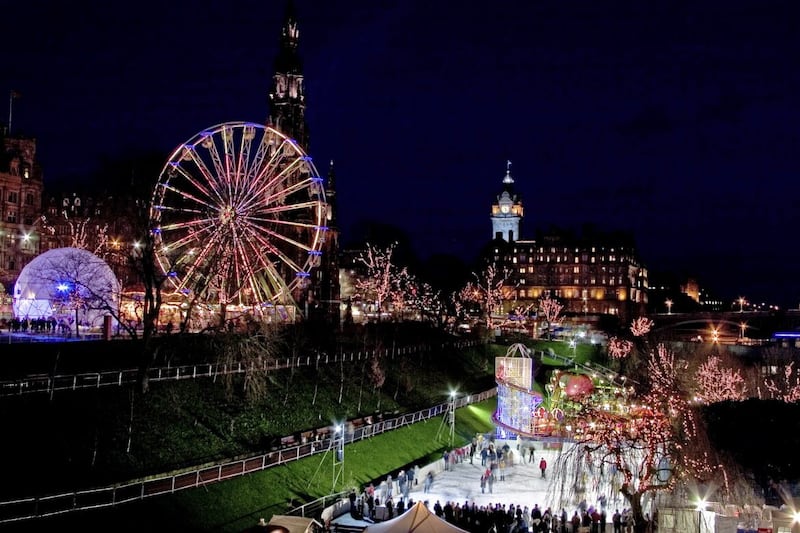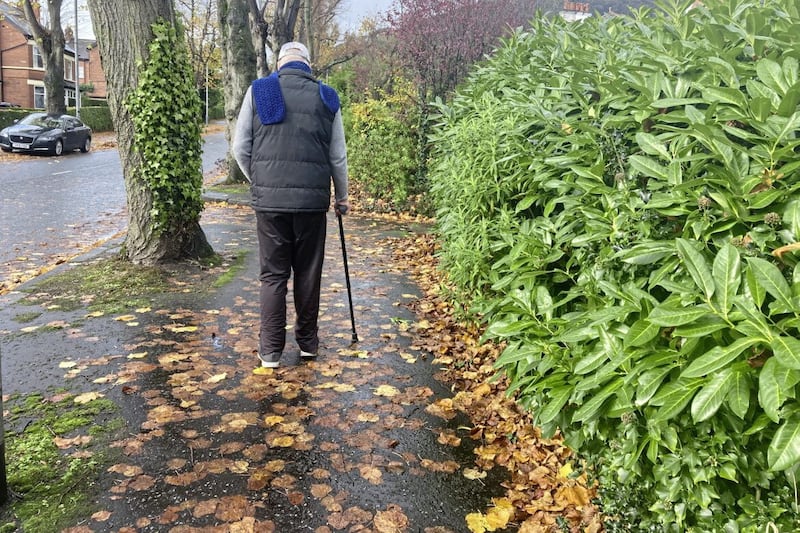IN THE late 1800s Edith Campbell was the equivalent of what came to be known as a Page Three girl except she was modest and genteel, and although still a teenager, when her photograph graced a window in High Street Belfast she was a talking point for all who passed by.
Born in 1876, Edith grew up in the grandeur of Glenfarne Hall, in Co Leitrim near the Fermanagh border, in the Parish of Cloonclaire, in the Valley of the Alders.
This was the summer residence of Sir Edward Harland, founder of Harland and Wolff and MP for north Belfast, and it was here that the great and the good came to enjoy balls and banquets.
The estate was large, well tended, on the side of Lough McNean with a nearby quarry that apparently provided the flagstones that were transported to Belfast to form the Titanic slipway.
It must have been a heady place for a little girl whose father was the land steward for the estate and I can just imagine the boys and girls from the village meeting at the crossroads to dance and fall in love, right on the spot where The Ballroom of Romance stands today.
For whatever reason, perhaps as a result of her mother’s death, Edith was plucked from this idyllic childhood and, when only 16 years of age, sent to work in a family-run cafe in Donegall Street in the bustling town of Belfast. It proved difficult for her loving father to say goodbye and obviously he worried about his only daughter, as this letter indicates. Might she be homesick?
Glenfarne Hall
6th September 1893
My Dear Daughter,
I am so much grieved to hear of you not being well that I don’t know what I am doing, but I trust in God that you will soon get alright.
Come home at once, first write to tell me all about it, and then I will send you the money. In the mean time don’t for any sake lace yourself tight and that would be a great cause and take all the open air you can and long walks and take some iron. I shall send you money for worship when you write and also for any medicine you require you might borrow a few shillings from Mr Morrow and take a few days at Bangor first and then come home.
I believe I know what is the matter, so I hope you will soon get out of it.
Greene is left and I hear was married yesterday in the Parish Chapel. All are well here except a cold I have got.
Please write by return and let us know all.
Your loving Father, F Campbell
Good bye and God bless you to I see you.
Be sure and don’t lace tight.
She was a beauty with many admirers. One young man even travelled from Glasgow every month just to sit in the corner of the cafe and gaze upon her as she moved between the small tables.
One day he plucked up enough courage to propose – poor boy was turned down flat but I’m sure with a soft word and a gentle smile. She never lost that charm and interesting that even in her late 70s she was paid court by a handsome gentleman, an elderly sea captain who had sailed round the Cape Horn in a clipper ship.
It was about this time the young Edith was ‘head hunted’ by the well known photographer Clement Little whose studio was in High Street. He had developed his own unique line in portraiture and wanted to advertise his professionalism. He needed a model and perhaps he’d walked up Donegall Street to the tea shop where he spied young Edith Campbell and with her family’s permission she was photographed in various gowns and vignettes which were then displayed in the atelier’s window.
But it was the large portrait of the girl with hair tumbling over her shoulder and a lace colour that attracted families into Mr Little’s studio.
In her 30s Edith became an adventurous woman, heading off to America to visit her cousin in Queens, New York. It must have been about 1912 when she boarded the RMS Lusitania on her outward-bound journey and her letters home spoke of dancing and playing whist.
She writes about staying up after a "wonderful party to watch the lights on Coney Island looking like fairyland". Her son gave her a modest diamond ring that could be sold if she needed to come home in a hurry or lost her ticket. As it was, she returned on the Lusitania which, not so long afterwards was torpedoed, with the loss of 1,193 lives.
Edith did marry – in fact, twice. First of all Thomas Graham a Queen’s Islandman who, when he died, a report in the newspaper told how he was carried from Lilliput Cottage in north Belfast to the Borough Cemetery, attended by 4,000 men and women.
She then married bespoke tailor John de Winter who worked in North Street Arcade. She had two sons by her first marriage and two daughters with her second husband. One of them was my mother.









